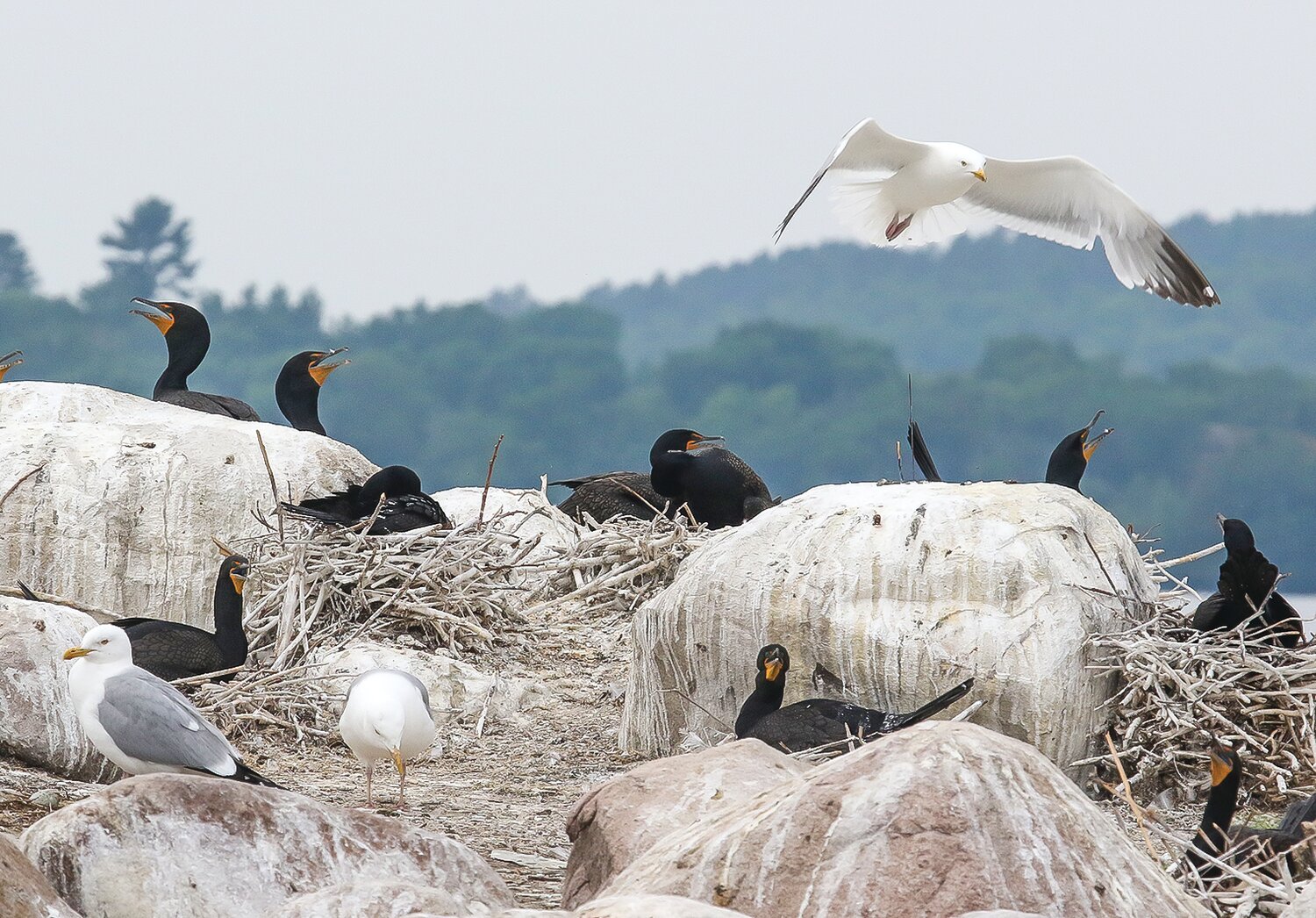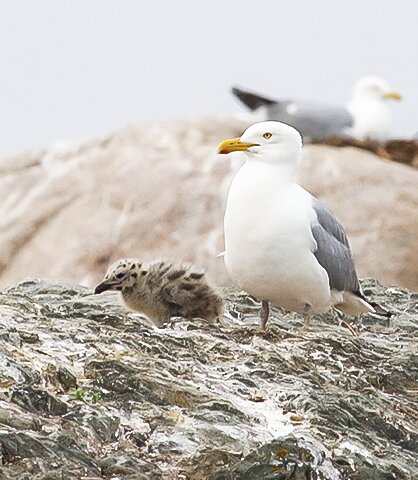Support the Timberjay by making a donation.
POTATO ISLAND
Vermilion’s largest bird nesting site is a hub of activity
LAKE VERMILION— Way out in the middle of Big Bay sits one of the region’s most robust hubs of bird life. It’s called Potato Island, presumably for the many potato-shaped boulders …
This item is available in full to subscribers.
Attention subscribers
To continue reading, you will need to either log in to your subscriber account, below, or purchase a new subscription.
Please log in to continue |
POTATO ISLAND
Vermilion’s largest bird nesting site is a hub of activity
LAKE VERMILION— Way out in the middle of Big Bay sits one of the region’s most robust hubs of bird life. It’s called Potato Island, presumably for the many potato-shaped boulders found along its rocky shoreline. It’s currenty owned by the Lake Vermilion Resort and Tourism Assocation, donated in 2013 in memory of Shaver Strand and family, according to the small sign that stands on the island’s highest point.
It’s a small island by Vermilion’s standards, just a half acre of rock with scattered low vegetation, but it has become a major rookery for both double-crested cormorants and herring gulls. It’s also become a focal point for folks who use the lake and are regularly drawn to this remarkable display of life.
On a recent visit this past weekend, anglers were bobbing off the island’s west end and a pontoon full of nearly a dozen tourists slowly circled the island, as those aboard watched the constant activity.
Birds come and go incessantly, creating a cacophony of the high-pitched calls of the gulls, the loud peeping of the gull chicks, mixed with the low grunting of the cormorants. The island is mostly bedrock, capped by a white-to-greenish layer of guano, and it’s home to hundreds of birds, with probably 200-300 cormorant nests and dozens of herring gull nests as well. The birds seem to get along for the most part, although there was a brief moment of drama during our recent visit when one of the herring gulls ended up with a cormorant chick, which it proceeded to eat to the accompaniment of some loud and angry cormorants and excited gulls. The gull chicks, which were wandering at will on the rock, seemed not to be at risk from the nesting cormorants, which are pretty exclusively fish eaters. Gulls, by contrast, will eat just about anything they can catch.
While people are plainly attracted to the island, and all its hubbub, it’s most certainly the domain of the birds. There is no convenient landing spot and even if one did manage to land, the island is covered in guano and the herring gulls would almost certainly make your visit unpleasant. When protecting their young, herring gulls can be very aggressive. They’ll fly up behind and hit you on the back of the head with their feet, an action that is often timed as well with the release of some pretty noxious gull poop. There’s nothing like the prospect of a stinky goo running down the back of one’s neck to encourage most of us to avoid landfall on their isolated refuge.
This is one spot best left to the birds.















